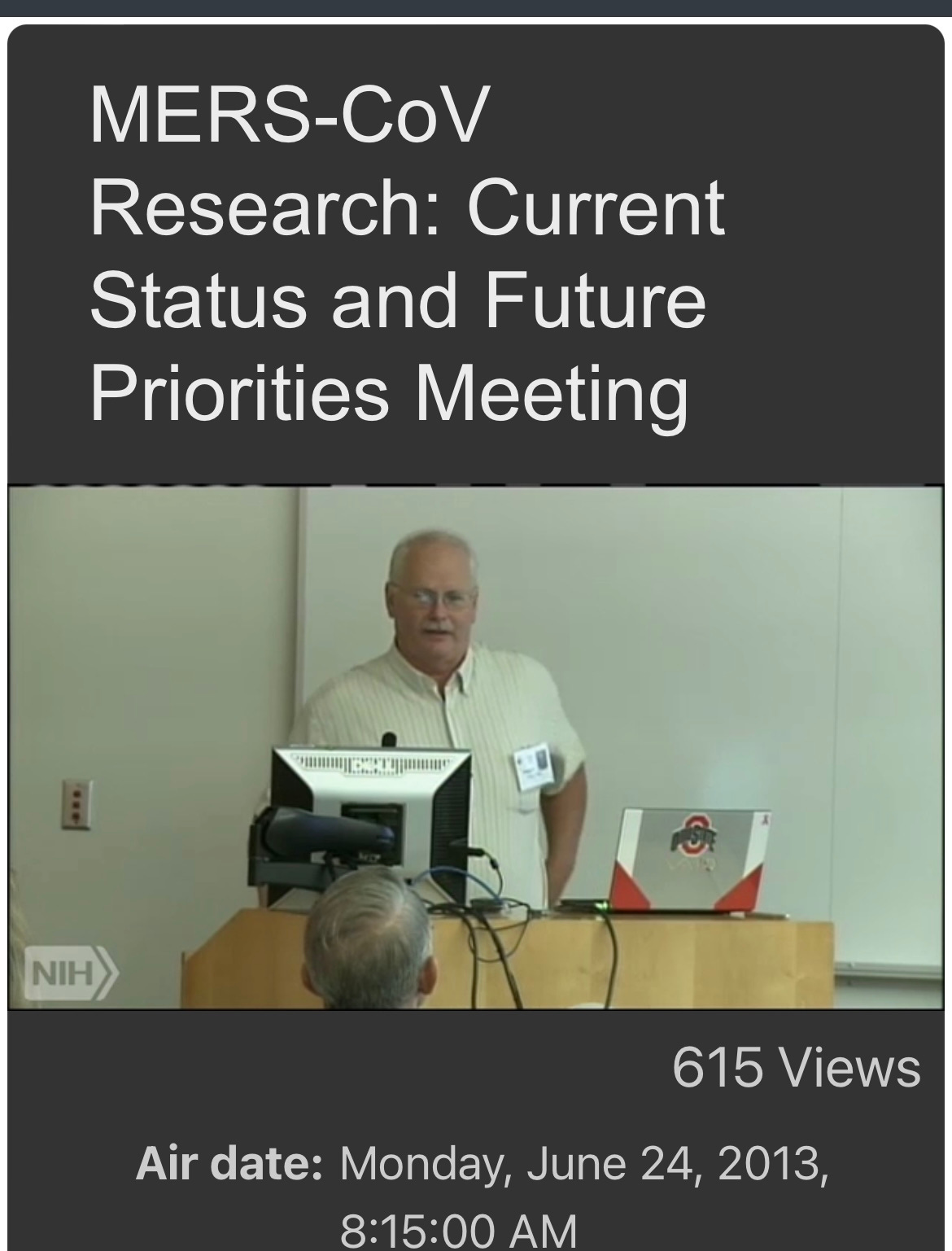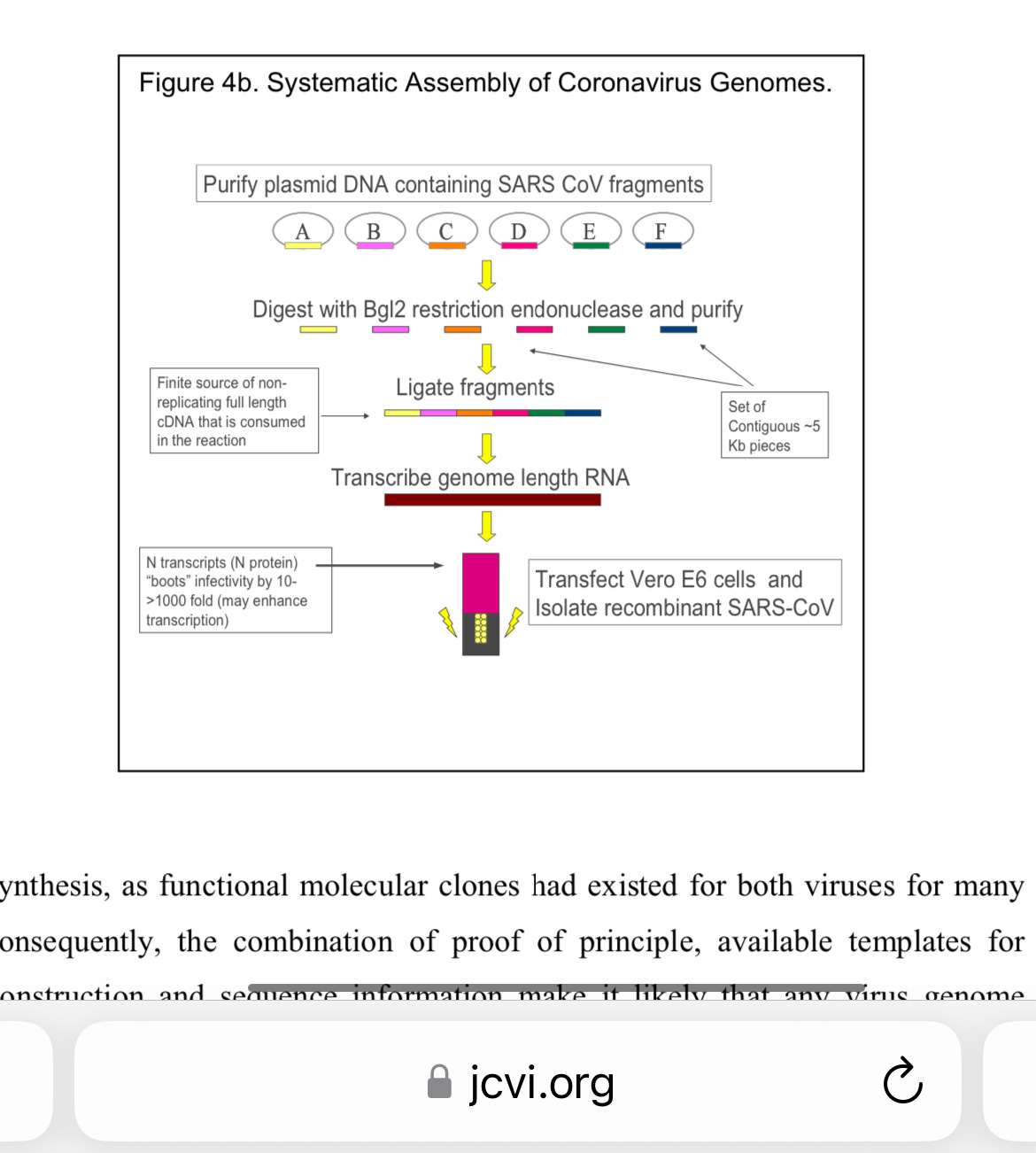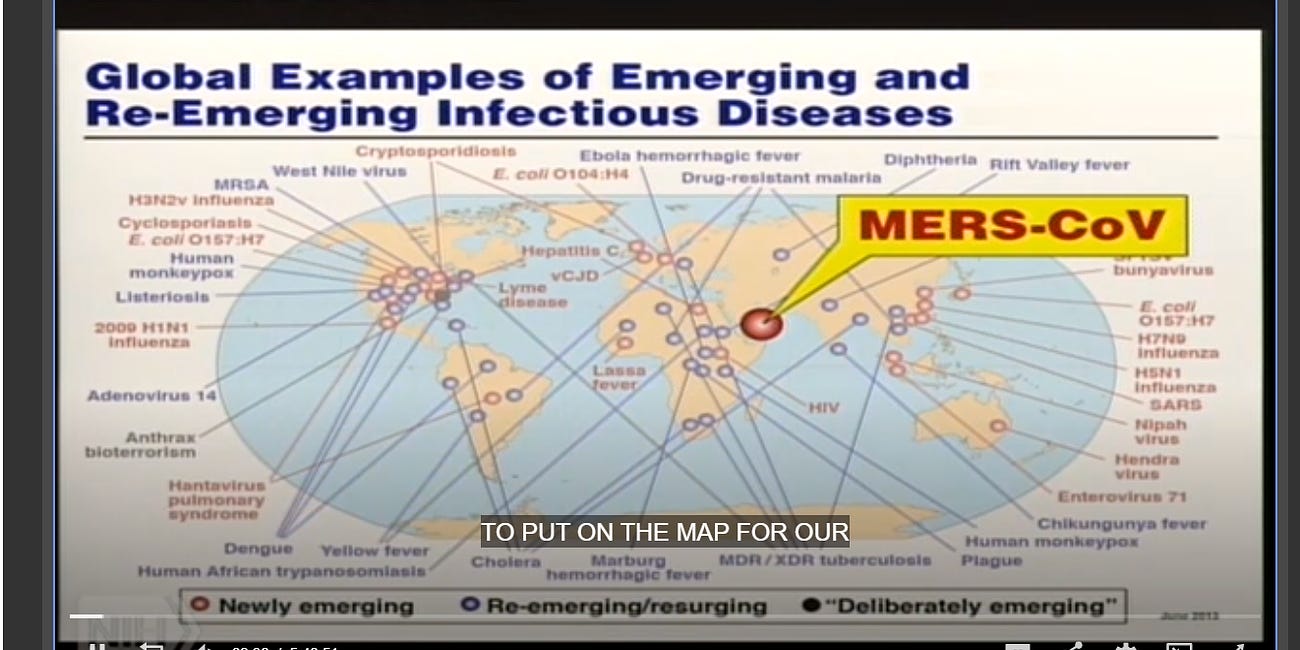Ten years ago, microbiologist Ralph Baric told Tony Fauci and the world he would make coronaviruses more lethal. Then - with Fauci's backing - he did.
Baric, who worked hand-in-glove with the lab in Wuhan from which Sars-Cov-2 likely leaked, also insisted the government keep its rules on coronaviruses loose so he could tinker with them more easily.
(SECOND OF TWO PARTS; PART ONE IS HERE)
Questioned under oath in 2022, Dr. Anthony S. Fauci largely denied knowing Dr. Ralph S. Baric, a North Carolina scientist and the world’s top coronavirus researcher.
Fauci’s claim came though he met one-on-one with Baric as Covid raced around the globe in early 2020 - and though he had funded Baric’s work and hosted Baric at a day-long coronavirus research conference in 2013. (I wrote about Fauci’s unlikely memory lapses here, in Part One of this piece.)
Why did Fauci try so hard to insulate himself from Baric 18 months ago - even at the cost of giving nonsensical answers while under oath?
—
(The Truths grind slow, but they grind exceeding fine. Help me hold Fauci and the rest to account, for 20 cents a day.)
—
Baric’s role and the plans he outlined in the conference on June 24, 2013 may help answer that question.
As I explained in Part One, the National Institutes of Health put the day-long event together during an outbreak of a novel coronavirus called MERS-Cov, which was highly lethal but not very transmissible.
A complete video of the conference is publicly available here. For anyone interested in understand the science - and the scientists - that may have led to Covid, it is a six-hour must-watch.
About 50 people attended the event. They included leading coronavirus researchers, as well as Peter Daszak and members of his EcoHealth Alliance, and federal officials concerned about infectious diseases. But Baric was without doubt the star of the show.
He made the first presentation, then another after lunch. He rarely went more than a few minutes without asking questions. He had earned the role. After earning a PhD in microbiology from North Carolina State University in 1982, Baric turned to infectious disease research.
He became known for his ability to handle coronaviruses, which can be hard to grow in labs, as well as in making genetic modifications to them. Because coronaviruses have a relatively large genome - the nucleotides that encode the information necessary for them to replicate themselves - they are harder to genetically modify than some other viruses. But Baric and his researchers did so with relative ease.
—
(Destroying the world in order to save it, a presentation by Dr. Ralph S. Baric. Yes, that’s Tony Fauci in the front row.)
—
Coronaviruses are named for their striking shape. They have a halo of “spike” proteins sticking out of a shell that protects the strand of genes that lets them replicate. The spikes attach to receptors on human cells, letting the coronavirus begin the process of copying itself.
Doctors had historically considered coronaviruses minor health threats compared to influenza, much less terrors like smallpox. The four coronaviruses known to infect humans before 2002 were generally associated with common colds.
Most respiratory virus researchers focused on influenza, whose dangers were more obvious. But the 2002-03 SARS epidemic, which killed about 800 people and caused a worldwide panic, and the MERS outbreak a decade later, made coronaviruses a hot topic among infectious disease researchers - and the policymakers who funded them.
Baric made sure everyone understood the risk of his favorite virus - and the need for well-funded research programs to reduce it.
Sure, neither SARS nor MERS appeared very transmissible, with MERS in particular seemingly requiring prolonged and close contact.
But their fatality rates were striking — 10 percent for SARS, 50 percent for MERS. With a few genetic modifications, similar coronaviruses might spread far more quickly, Baric argued.
—
The best way to predict and ultimately reduce that risk would be to build coronaviruses more lethal and transmissible than any yet found in nature, Baric said in response to a question near the end of his first presentation:
The other way to do it… [is] make in essence recombinants where you drop the spike gene in different bat coronaviruses which you think may have appropriate properties that could be emergent, preemergent strains and characterize their ability to replicate in human cells…
Baric then acknowledged such work might be so risky that it might fall into the category of “dual-use experiments,” meaning research that militaries or terrorists might use to create deadlier biological weapons.
“Now, maybe dual-use experiments of concern, that’s another issue,” he said, with a slight giggle. (Yes, the video makes clear he does giggle, at approximately 45:55.)
—
(Do-it-yerself coronaviruses, the Ralph Baric way! From a 2006 Baric paper titled “Synthetic Viral Genomics: Risks and Benefits for Science and Society.”)
—
At a 2014 conference in Washington, D.C., Baric would also acknowledge his laboratory work outran any natural mutations that coronaviruses so far discovered in living animals had managed to produce.
After discussing three potential ways for the viruses to broaden their “host range” — that is, infect different species of animals, including humans — Baric acknowledged that two of the three “have only been identified using in vitro models, although the potential exists for similar mutants to emerge naturally in nature.”
Why do this work at all?
Baric and other scientists at the 2013 conference explained their work as necessary both to understand the potential threat from coronaviruses and to defuse it by helping research on antiviral drugs and vaccines.
—
(Seriously, I need your help.)
—
Never mind that the despite the publicity the SARS and MERS outbreaks had garnered, theor combined global death toll equaled roughly one day of flu deaths.
Never mind that vaccines for flu, the closest counterpart to coronaviruses, appeared mostly useless and that decades of research had not brought the world closer to better ones.
By making stickier spikes and fitter, more dangerous viruses, Baric would enable the development of better vaccines and antivirals. He would create an arms race, in order to win it.
Baric never put it quite this bluntly, but near the end of the conference - five hours and 26 minutes in, according to the video - he came close. “It’s basically structure-based antigen design,” he said. “You can blend S [spike] components… to provide a broader neutralizing response within that cluster.”
—
Baric wasn’t just outlining potential research pathways in June 2013. He intended to do the work, and he did. In November 2015, he — along with a Chinese virologist named Shi Zhengli — published what became a notorious paper in Nature Medicine:
A SARS-like cluster of circulating bat coronaviruses shows potential for human emergence
Baric, Shi, and the other authors explained they had “generated” a “virus expressing the spike of bat coronavirus SHC014 in a mouse-adapted SARS-CoV backbone.”
In other words, Baric had combined multiple coronaviruses to make one better at infecting humans. The new lab-made virus would “replicate efficiently in primary human airway cells,” the paper explained. “Additionally, in vivo experiments demonstrate replication of the chimeric virus in mouse lung with notable pathogenesis.”
Baric’s co-author Shi was, of course, none other than the head of coronavirus research at the Wuhan Institutes of Virology, the lab from which Covid likely leaked in 2019. In 2018, Daszak’s EcoHealth Alliance attempted to get federal funding for a new project where the Wuhan lab and Baric would again collaborate on work to make coronaviruses more dangerous.
The United States government rejected the request as too risky; but whether Shi’s group went ahead with the research anyway and accidentally created Sars-Cov-2 is the most important question about Covid’s origins. The second most important is what Baric, Daszak, and other American researchers knew or suspected about Shi’s research as Covid exploded worldwide.
(In 2020, Nature Medicine added a defensive, if snippy, note to the article complaining that it was “being used as the basis for unverified theories that the novel coronavirus causing COVID-19 was engineered. There is no evidence that this is true.”)
—
In 2016, Baric was the senior author on a paper in the Proceedings of the National Academy of Sciences that arguably went even further than the Nature Medicine paper. The research group he led had manipulated a coronavirus provided by Shi and found it “poised for human emergence.”
The authors explained that they had “construct[ed] chimeric and full-length zoonotic coronaviruses to evaluate emergence potential… the results indicate a significant threat posed by WIV1-CoV.” The lab-grown viruses “replicated efficiently in human airway cultures,” they wrote.
—
Within the biomedical research community, research like Baric’s was controversial even at the time.
In a 2011 paper, virologists had shown that they could make avian influenza transmissible between ferrets, who are considered excellent animal models for humans. Avian flu does not easily infect humans, but it can be highly lethal when it does, so the avian flu experiment stirred serious concerns.
But the infectious disease researchers had an important ally: Tony Fauci, who wrote in the Washington Post in 2011 that the flu research was a “risk worth taking.”
Still, the obvious risks posed by highly infectious and dangerous viruses like smallpox had led the federal government to create what it called a list of select agents which required special precautions. Besides smallpox, the list included anthrax, plague, and the original SARS.
But MERS, despite its lethality, was not considered a “select agent”. And in the final moments of the June 24, 2013 conference, Ralph Baric called for the government not add it to the list.
“If you want fast movement forward, and you restrict it with select agent status, then that will have a very chilling effect on productivity,” Baric said. “I think somebody had to say it.”
MERS was never added to the select agent list.
And six-and-half-years later, the massive and deadly coronavirus epidemic that Baric had predicted - and worked so hard to stop - exploded around the globe.
(END OF PART TWO)
—
PART ONE, IN CASE YOU MISSED IT AND YOU’RE A GLUTTON FOR PUNISHMENT
—







I am a retired Army officer trained in NBC so I know what I am talking about. I knew in Oct-Nov 2019 it was coming here despite what the Govt and Media said. Why because the Chinese were using human vectors to spread covid. I am not part of there is no evidence crowd that Covid was not man made. It is believe me. Had it not for the Govts attempt to panic the population it would have come and gone. China is a bad actor and should not be trusted period. The other tidbit is that the disease didn't kill anywhere near what Grandpa Biden claimed. As Alex stated the flu was worse. If the pendulum doesn't swing back to moderates in the Govt we are in for trouble and if you think not ask yourself why they are pushing for pre-teens to get gender surgery. If you aren't signed up for Alex's Unreported Truths I encourage you to do so
I am so grateful you are bringing this to the attention of your audience. I live in the heart of where this happened. I have a patient that is wide awake to the atrocities of COVID and when her children were in high school they participated on the same swim team as Baric’s. The adults continued to have dinner once per month and in Feb of 2020, Baric told the group he would not be available for dinners again until at least 2021. Little did she know that her dinner guest was the one who manipulated these viruses utilizing humanized mice.
Keep up the great work! BTW, Baric has not been seen since Feb2020. There was recently a protest outside his lab on campus. We need more to know what happened here in the Tar Heel State!